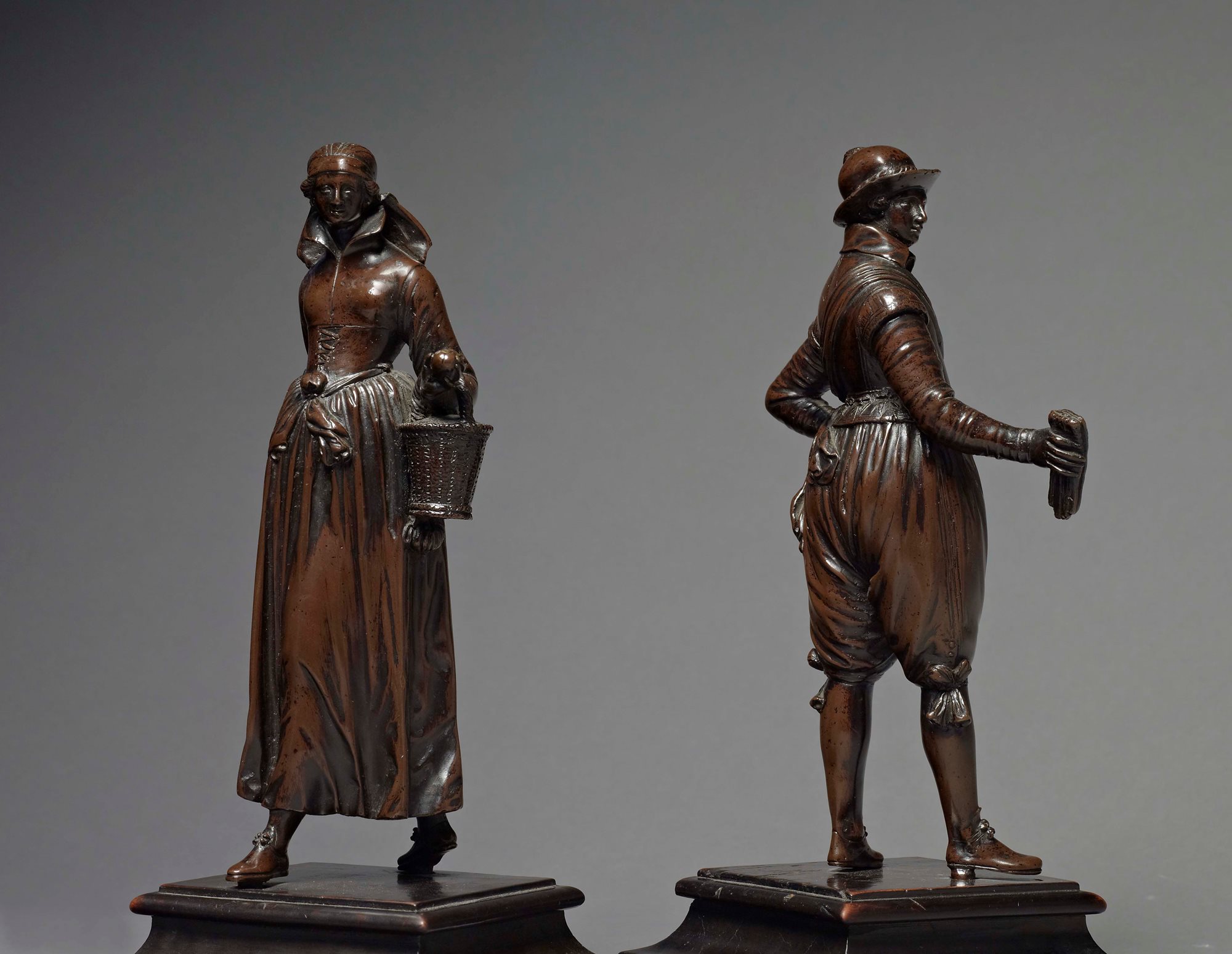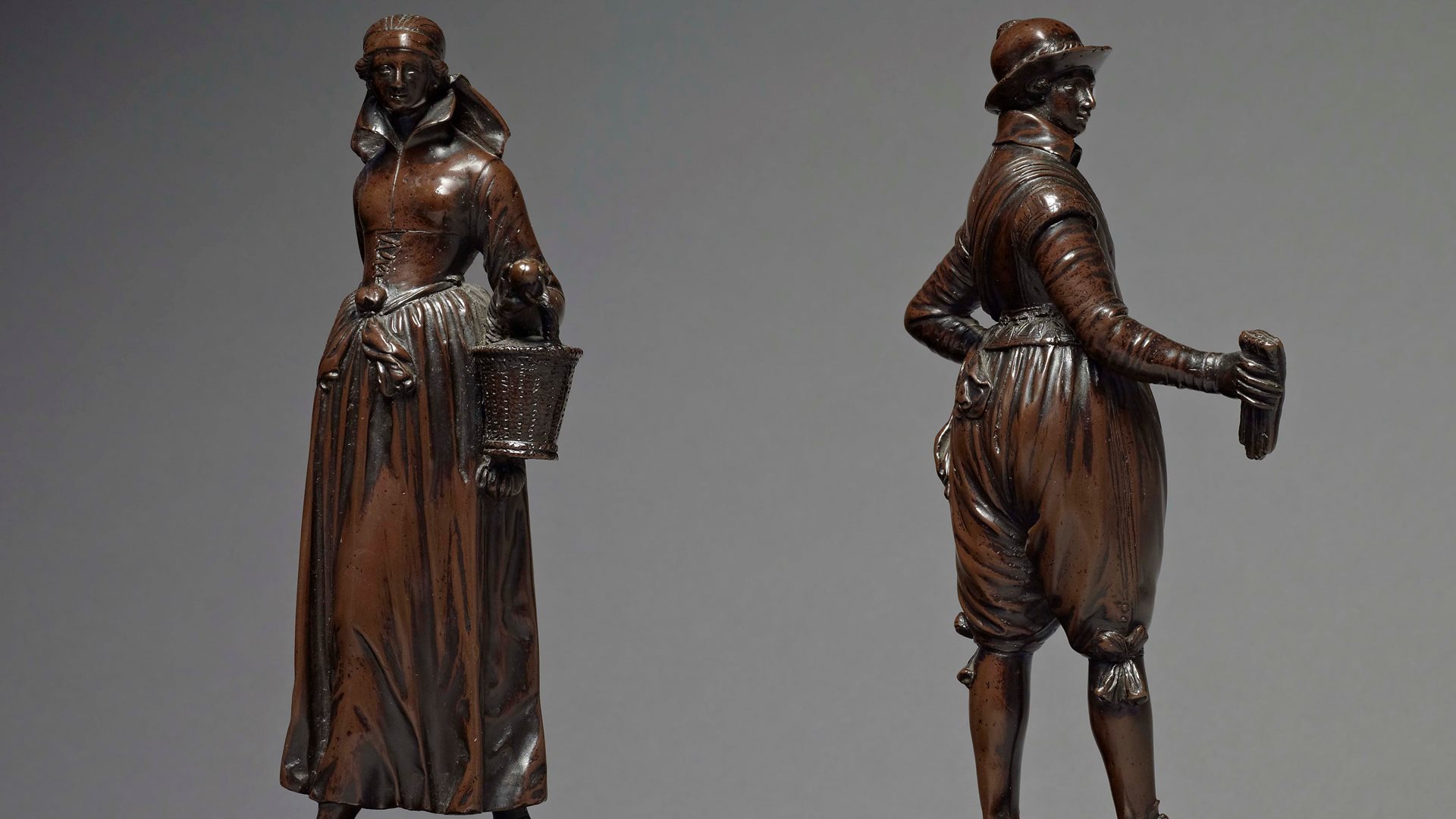

W. Bode, The Italian Bronze Statuettes of the Renaissance, 1907, edited and revised by J. D. Draper, New York, 1980, pl. CCXVI and p. 107
R. Seelig-Teuwen, “Kavalier und Magd, Zu Barthélemy Prieurs Bronzestatuetten”, in Weltkunst, n. 23, December 1991, pp. 3706-3709
V. Krahn, Von allen seiten schön, Bronzen der Renaissance und des Barock, Berlin, 1995-1996, n. 144-145
Cast in bronze. French sculpture from Renaissance to Revolution, exh. cat., Paris, Musée du Louvre, October 2008 - January 2009 [exhibition travelled to New-York, The Metropolitan Museum and Los Angeles, The J. Paul Getty Museum], cat. 31 and 32, pp. 142-147
R. Seelig-Teuwen, Bronzes français de la renaissance au Siècle des lumières, Paris, 2009, pp. 142-147, n. 31-32c
R. Seelig-Teuwen, “Kavalier und Magd, Zu Barthélemy Prieurs Bronzestatuetten”, in Weltkunst, n. 23, December 1991, pp. 3706-3709
V. Krahn, Von allen seiten schön, Bronzen der Renaissance und des Barock, Berlin, 1995-1996, n. 144-145
Cast in bronze. French sculpture from Renaissance to Revolution, exh. cat., Paris, Musée du Louvre, October 2008 - January 2009 [exhibition travelled to New-York, The Metropolitan Museum and Los Angeles, The J. Paul Getty Museum], cat. 31 and 32, pp. 142-147
R. Seelig-Teuwen, Bronzes français de la renaissance au Siècle des lumières, Paris, 2009, pp. 142-147, n. 31-32c
Barthélemy Prieur was born in about 1536 of a Protestant peasant family in Berzieux, in the north of the Champagne region of France. His early training remains obscure, but it has been proposed that he went to Rome at a young age. From October 1564 to the end of 1567 Prieur is documented as the court sculptor to the Duke of Savoy. The artist had settled in Paris by June 1571. However the persecutions against the Protestants prompted Prieur’s self-imposed exile to Sedan in the Duchy of Lorraine in 1575 and again from 1585 to 1594. It has been suggested that the artist began sculpting his genre figures while in exile.
Bronze statuettes were first made for collectors in France in the late 16th century. Prieur seems to have been the dominant specialist of such pieces in this period yet the evidence for his production of such sculptures has only emerged in the last fifty years, with the publication of various inventories in the French National Archives of Prieur’s workshop and of 17th century French collections. A core group of statuettes, groups and busts, sometimes hitherto labelled with another name, are now widely accepted as by Prieur.
The present two figures, depicting a cavalier with a plumed hat and a lady carrying a basket, form an elegant pair. Each positioned with one leg forward, almost in a dance-like position, they turn slightly towards each other, the woman seemingly presenting a piece of fruit to the gentleman who is holding a pair of gloves in the hand he extends towards her. Several other versions of these figures exist but there is a wide disparity of quality among them. The present pair is among the finest known examples, cast with exceptionally delicate detailing and featuring the wonderful rich patination characteristic of Prieur. Other excellent examples are in the Huntington Library in San Marino, California and in the Liebighaus in Frankfurt. The exact significance of this charming pair has not been elucidated. The gestures and attributes may be interpreted as being allusively erotic. The costumes, that of a country dwelling woman and of a town dwelling man, appear somewhat mismatched and therefore this pairing may be an illustration of the theme of different lifestyles in city versus country, which appeared in contemporary literature. The clothing is captured with lively details that fully render the materiality of the various fabrics and textures.
The utmost smoothness of the modelling is typical of the artist, as well as the long, elegant proportions of the female figure in particular, which are reminiscent of other sculptures by Prieur showing women at their toilet.
Bronze statuettes were first made for collectors in France in the late 16th century. Prieur seems to have been the dominant specialist of such pieces in this period yet the evidence for his production of such sculptures has only emerged in the last fifty years, with the publication of various inventories in the French National Archives of Prieur’s workshop and of 17th century French collections. A core group of statuettes, groups and busts, sometimes hitherto labelled with another name, are now widely accepted as by Prieur.
The present two figures, depicting a cavalier with a plumed hat and a lady carrying a basket, form an elegant pair. Each positioned with one leg forward, almost in a dance-like position, they turn slightly towards each other, the woman seemingly presenting a piece of fruit to the gentleman who is holding a pair of gloves in the hand he extends towards her. Several other versions of these figures exist but there is a wide disparity of quality among them. The present pair is among the finest known examples, cast with exceptionally delicate detailing and featuring the wonderful rich patination characteristic of Prieur. Other excellent examples are in the Huntington Library in San Marino, California and in the Liebighaus in Frankfurt. The exact significance of this charming pair has not been elucidated. The gestures and attributes may be interpreted as being allusively erotic. The costumes, that of a country dwelling woman and of a town dwelling man, appear somewhat mismatched and therefore this pairing may be an illustration of the theme of different lifestyles in city versus country, which appeared in contemporary literature. The clothing is captured with lively details that fully render the materiality of the various fabrics and textures.
The utmost smoothness of the modelling is typical of the artist, as well as the long, elegant proportions of the female figure in particular, which are reminiscent of other sculptures by Prieur showing women at their toilet.